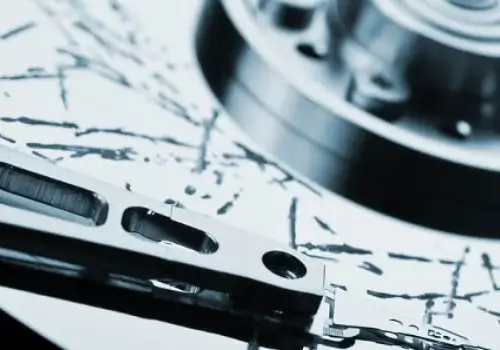
Prevent External Hard Drive Failure
The most difficult issue for a computer user to tackle is the failure of an external hard drive. In most cases an external drive is used to keep important files and system backups, so when the drive fails, it fails at the most inopportune time. From that point forward, recovery options are limited and will require days, if not weeks, before lost data from the external drive can be recovered.
The worst thing you can do when dealing with a damaged hard drive is panic.
The best way to prevent a loss is to reduce the chances of an external hard drive failure by taking preventative measures. The question is never IF an external drive will fail, the question is WHEN it will fail. The trick is to understand the care needed by an external hard drive and to limit its exposure to damaging activities.
Minimizing External HDD Failure Chance
As with internal HDD, there are several categories that must be considered in order to mitigate the possible failure conditions of an external HDD. The following list is an abbreviated review of Prevent Internal HDD Failure, which covers these topics in a more in-depth review.
Prevent the most common drive failure causes
HDD failure can be caused by environmental, electrical and stress related issues. Environmental causes can be related to air quality, temperature, condensation, motion, and vibration controls and must be accounted for when securing a drive from damage. Electrical dangers stem from power loss and fluctuations as well as electrostatic discharges. The dangers from stress deal mainly with the regular power cycling of a drive as well as keeping the drive healthy through defragmentation.
Monitor drive health
HDD health is a key indicator of possible drive failure. The process of monitoring a HDD is made easier by the fact that a key monitoring program comes installed on Windows systems, chkdsk. Using chkdsk alongside S.M.A.R.T. programs will indicate key aspects of a HDD health prior to most failure scenarios.
Reduce data load
Reducing data load on a drive is meant to extend the life of a HDD by reducing the amount of wear and tear it receives from being over full. The recommendation is to remove all unwanted or unused files and programs from a drive and to keep only the essentials and often used programs uncompressed. All other files that are needed and not to be discarded should be compressed using a program like WinZip.
Manage drive life cycle
The life cycle of a HDD is the time from the first installation of a drive until the day that drive fails. There are tow main points in a drive’s life cycle that should be noted. The first is the initial months after installation when a drive is most likely to fail and the end of life of the drive when the drive is expected to fail. To combat the initial failure time frame, the recommended course of action is to use a process called burn-in. To combat the final phase of a drive’s life cycle, the recommended action is to plan for its ultimate end and replace the drive on a schedule.
External HDD Specific Failure Mitigation
An external HDD is more than a simple HDD that is no longer within your computer. There are specific dangers that an external HDD will face more often than an internal HDD. These dangers must be accounted for in order to maximize the lifespan of your external HDD.
Be exceedingly careful with the drive
External HDD are vulnerable to damage caused by excessive vibration on quick motions. Always insure that the drive is in a secure location when powered on. When transporting the drive, be sure to wrap it in something soft to ward off impact damage. If you are storing the drive for a longer transport, the external HDD should be stored in a padded box.
Use on proper surfaces
When using an external HDD, the drive must be located on a flat, level, and non-slip surface. The external HDD must not be placed on any surface that could add or exacerbate hear retention, like paper, towels, and other cloth items.
Always use the Remove Device option
External HDD do not operate entirely like an internal HDD. There are times that a write process may be delayed before being sent to an external drive, even though your computer may indicate that the file transfer was complete. To make absolutely sure that all files have been transferred properly, use the “Safely remove hardware and Eject media” option form the system tray. Ejecting the external HDD from the system using this option with force any waiting file transfers to complete and then power down the device. An added benefit of using this process is that you ensure that a power surge associated with the improper unplugging of the external HDD will not happen.
Use the USB plug properly
Most external drives are connected to a computer using a USB plug. This is the power cable for your external device and should be handled and used appropriately. When removing a USB cable from a device, pull gently from the cable connector. Do not yank the cable out as it could damage the connector. Also, when connecting an external device with a USB connector, be sure to inspect the USB connector before plugging it in. Check for damage, dust and corrosion.
